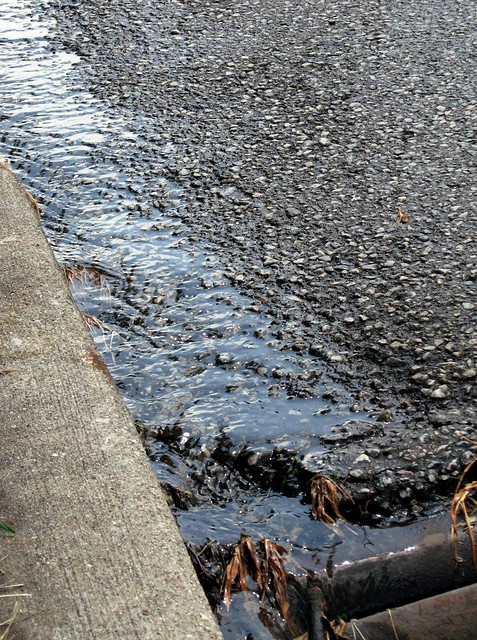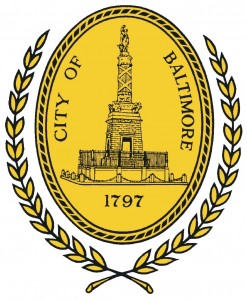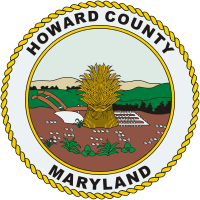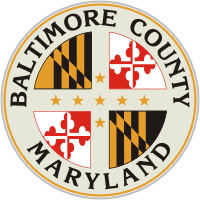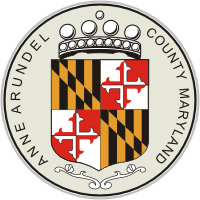‘Rain tax’ falls all over the place: Stormwater fees uneven, from a penny to thousands
By Christopher Goins
To comply or not to comply with the new so-called “rain tax”? There is no question.
The state’s 10 most populated counties are required by law to implement a stormwater utility fee by July 1. The revenue will be used to fund their respective watershed protection and restoration programs, designed to prevent pollutants from entering the Chesapeake Bay. Seven jurisdictions have set a fee, but three others are still in the process of setting fees or getting local approval.
The bill requiring the tax, HB 987, passed in 2012, left it up to counties to set the fees themselves. Here is the Maryland Department of the Environment’s explanation of the fees.
They don’t all go by the same name or by a name at all. Montgomery County has Water Quality Protection Charge while Charles County has a Stormwater Remediation Fee. But what many do have in common are their determination by square feet, commonly labeled as “equivalent residential units” or ERUs.
Equivalent residential units
In some cases, if a property falls far below the amount of square feet in the ERU, the price per ERU will go down or up along with it.
On the residential and the commercial sides, Baltimore City charges the highest fees and Frederick County charges the lowest.
“Our frustration is going to be that the General Assembly is likely going to go back and modify this law forcing these counties in all likelihood to have to go through this whole process again next year,” said Leslie Knapp, legal and policy counsel at the Maryland Association of Counties.
Donald Fry, president of the Greater Baltimore Committee, noted the “uneven fashion in which the policy is being applied will create among jurisdictions instant competitive disadvantages that didn’t exist a year ago” in a column last week. He added it will raise the cost of doing business in Maryland.
Here are the seven counties and what they are charging:
When Montgomery County residents see the water quality protection charge on their property tax bill, it won’t be very different, as they already had a fee in place. In fact, the county insists that it will be less from last year’s charge.
Generally, the fee is $88.40 per ERU unit, which is 2,406 square feet. However, there are numerous tiers (Tier 3 is $88.40) for different kinds of property and depending on which tier the property falls in a property owner could end up paying a different price.
Detached homes, townhomes, and agricultural properties have seven tiers ranging from $29.17 to $265.20.
Commercial properties will pay $88.40 per ERU. So a property that has 3,150 square feet in impervious surface area would pay about $115.73. Nonprofit organizations (501 (c)(3)s) will pay no more than $132.60 on the lowest tier and no more than $2,033.20 on the highest tier.
The county has a plan in place to phase in payments for those assessed fees for the first time. Residents who have never received a WQPC bill before or “received a new impervious area increase to their WQPC bill from the 2012-2013 tax year” will pay 33% of what they were estimated to pay during a 3-year phase-in. So the second year they will pay 66% of their estimate, and in the third year the will pay the full estimate.
Levied quarterly, the Baltimore City stormwater implementation fee (see page 12) of $18 per ERU will appear on individual water bills or “stormwater only” bills for people who don’t use water from the city. The bill is still going through the City Council process.
Each ERU equals 1,050 feet.
However, the fee does change depending on one of the three tiers a property would fall under.
Those that fall into the lowest tier would pay $12 per quarter; the middle tier $18 per quarter; and the upper tier $36 per quarter. This means residents would pay between $48 and $144 annually.
“Proposed stormwater fees being considered by Baltimore City would result in the city having the highest so-called ‘rain tax’ on businesses in the state, according to experts who are following efforts in ten Maryland jurisdictions to implement the fees required by state legislation,” wrote Fry.
According to a Department of Public Works document, non-single family residential properties (non-SFR) will shoulder 67% of the total contribution to the stormwater fund, although they make up 11.6% of the properties distributed because “those properties that have large amount of these hard surfaces [impervious surfaces] will pay more in fees.”
Non-single family residential properties include “multi-family residential”, commercial, industrial, institutions, and non-profit/exempt organizations, and vacant land.
The Frederick County stormwater fee doesn’t discriminate whether a property is a business, residential, or nonprofit. All eligible properties will only have to pay a penny ($0.01), thanks to a vote on March 7 by the Frederick County Board of County Commissioners. This fee will generate $482.50 when collected from across the county.
Frederick County Commissioner President Blaine Young says that the board set the fee so low “just to be in compliance because we are completely in disagreement with why we are having to do this.”
“We would’ve done a tenth of a cent if it was legal,” Young said, adding that he expects the fee to remain the same and be finalized on Thursday. The Board of County Commissioners also doesn’t believe the science used to justify the policy is correct.
There will be a public hearing on the fee on Thursday to discuss the fee and the program it funds.
Howard County has set its fee for $15 per 500 square feet of impervious surface on all properties and has estimated it will take in $18 million per year as a result. For example, a single family home with 2,300 square feet of impervious area would pay $75.
Residential, commercial, industrial, nonprofit, private school, federal properties, vacant properties with impervious surfaces will be subject to the fee.
But the county will determine how much impervious surface area on a property through a computer program that analyzes existing aerial photography.
In the cases of townhomes and condominiums, the county will bill the appropriate owner of the impervious surface area, whether it is a homeowners association or it is divided equally among joint owners.
In Baltimore County, one ERU equals 2,000 square feet but only commercial property owners use the full ERU rate, which is $69.
However, no one type of property is charged at exactly same rate as another property. A detached single family home has a fixed rate of $39. An attached single family home, such as a townhouse, has a fixed rate of $21. All residential property have caps “regardless of size,”
the Director of Baltimore County Department of Environmental Protection and Sustainability Vincent Gardina explained in an email.
And institutional property owners–nonprofits–have to pay $20 per ERU.
Baltimore County expects to generate $24,540,000 from this, according to a Baltimore County Department of Environmental Protection and Sustainability document. While credits are given, only nonprofits and commercial property can receive credits.
In an example within the document, the costs for an apartment complex covering 25.4 acres of land is $18,285. That’s because the buildings and the pavement that makes up the property totals 531,302 square feet, or 265 ERUs.
In a different example, the cost for a big box retail property that covers 25.8 acres of land is $27,807. This hypothetical property had 403 ERUs.
Initially, Harford County residents will only have to pay a tenth of what they will have to pay in following years. When tax bills come around, residents will only have to pay $12.50 for the phase-in stage. But afterward, the rate will rise to $125.
It’s basically the same for businesses and apartments.
For the first year, they will pay 10% of what they would pay on subsequent years, or $0.70 per 500 square feet. Afterward, owners of those properties can look to pay $7 per 500 square feet, but not until after the initial phase-in.
Credits are also very generous.
Residents can get virtually a full-refund of their payment (100% credit) back if their property undergoes “remediation projects.” Making use of rain barrels, brightening the outside of a home with a garden, and planting trees along waterways are some examples of how to get some money back.
Stormwater utility fees for Anne Arundel County residents vary depending upon what tier they fall in. The fee is assessed annually. The County Council is still fiddling with some of the rates.
In Anne Arundel County, an ERU equals 2,800 square feet and is $85. There are three billing tiers.
The lowest tier (the R10, R15, and R22 zones), which includes residential properties, townhomes, and condominiums, pay $34, or about half of one ERU.
Single family home falls into the second tier (properties within the R2 and R5 zones) and residents within this category must pay $85, which is equivalent to one ERU. Non-residential properties, which would include businesses, would pay this amount too.
Rural agriculture, as the elements within the highest tier are called, are twice the amount as a single family home at $170. These are in the RA and RLD zones.
An amendment passed last Monday will not affect the rates, said Matt Diehl, an Anne Arundel Department of Public Works official familiar with the matter.
Other counties still in approval process
Charles County has proposed fees but the County Commissioners haven’t cleared them yet. They will set the fee for each ERU each fiscal year, according to the proposed bill. The proposed fee for single family residential homes and all non-residential ERUS is $32. Townhomes and residential condos are $16 and $10.56 respectively.
Prince George’s County and Carroll County have yet to officially set fees.
Top stormwater fees for residential single family homes (per 2,000 feet)
1. Baltimore City $144 (annual)
2. Harford County $12.50 first year, $125 subsequent years*
3. Montgomery County $73.48
4. Anne Arundel County $60.71
5. Howard County $60
6. Baltimore County $39 (Detached Single Family Home)
7. Frederick County $0.01 on all properties.
Harford County’s fee is a capped at $125. Baltimore County’s residential property fee is a cap regardless of size.
Hardly any county uses the same square foot unit to determine each ERU (Montgomery County, for example, sets each unit for 2,406 square feet while Anne Arundel sets each unit for 2,800 square feet), so a review by Maryland Reporter used 2,000 square feet to compare how much each county was charging for the same amount of property.
The same goes for our list below.
Top stormwater fees for commercial (business) properties (per 2,000 feet)
1. Baltimore City $144 (annual)
2. Montgomery County $73.48
3. Anne Arundel County $60.71
4. Baltimore County $69
5. Howard County $60
6. Harford County $2.80 first year, $28.50 subsequent years*
7. Frederick County $0.01 on all properties.

MarylandReporter.com is a daily news website produced by journalists committed to making state government as open, transparent, accountable and responsive as possible – in deed, not just in promise. We believe the people who pay for this government are entitled to have their money spent in an efficient and effective way, and that they are entitled to keep as much of their hard-earned dollars as they possibly can.

